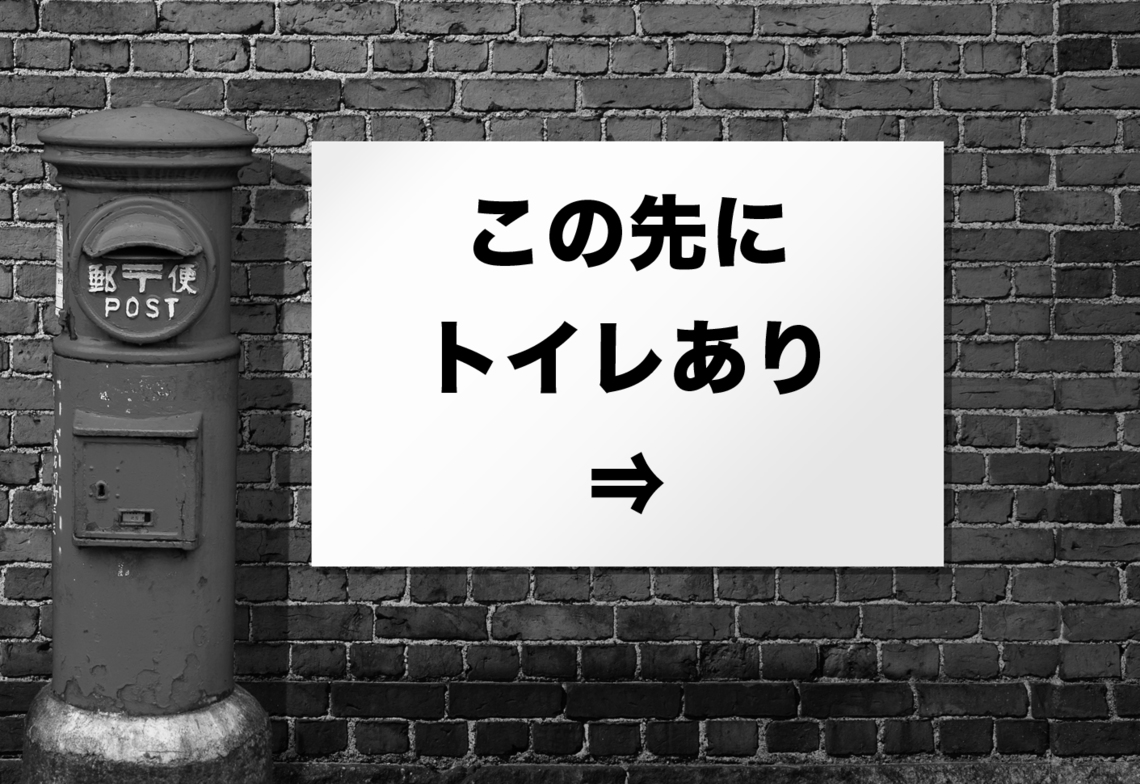How do you all usually come up with ideas? Of course, not just for ad campaigns, but also for internal projects, or even year-end party performances—there are lots of chances to think about what's "interesting," right?
Now, here's the problem. This is a problem my mentor, copywriter Tatsuya Okamoto, gave me when I was a rookie. It's an amazing problem that reveals the essence of ad creation!
<Question> Create a sign with a message that makes people stop peeing in public instantly.
<Answer ①> 
Oh, there's also this kind of answer these days.
<Answer ②> 
Seeing the answer, you probably think, "Wow, they got me there!" So, what exactly is so impressive about this question? Where is the secret to great advertising hidden?
Before answering that question, actually, most answers to this problem can be categorized into one of these four patterns: "Fear or Intimidation," "Threat," "Humiliation," or "Pleading."
"Police property" falls under the fear pattern. "Drawing a Buddha statue" is the awe pattern. "We'll cut you off the spot!" is classic intimidation. "We're watching from the mailbox" or "Oh my! How adorable" are humiliation patterns. "Please, no more public urination" is literally the pleading pattern.
But the answers for these four patterns are all words conceived from the landlord's perspective—the person displaying the sign—aiming to stop public urination.
But "Restroom Ahead" is different. This one absolutely requires thinking from the perspective of someone who's about to pee themselves. That's the essence of great advertising!
The feelings of the person showing (yourself) < The feelings of the person seeing (the other person)
Always consider the viewer's (the other person's) feelings... When? Where? What? How should you say it?
It's a super important fundamental principle, so we think we understand it, but we tend to unconsciously think only from the perspective of the presenter. Because we ad people take requests from presenters and work with presenters.
"Communicating" and "being understood" are different
For example, if I tell you all 100 times, "I'm wonderful" (communicate it), you'll never think, "Wow, Nakao-san is wonderful~". Instead, you'll probably think, "What's with this annoying old guy?". But if I act kindly, like saying, "Oh, you dropped your handkerchief," just that alone could make you think, "Wow, what a wonderful person." Without saying a single word like "I'm wonderful". In other words...
"Communicating" and "being understood" are two different things!
And putting yourself in the viewer's shoes is the essential stance needed to sense what will actually get through.
But when it comes to advertising, everyone immediately makes this mistake. For example, a super-popular celebrity appears, drinks a can of coffee, and goes, "Wow, this is good!" Then drinks some more and says, "Seriously, this is good!" Finally, they hold up the can, look straight at the camera, and deliver the punchline: "Seriously good. This is the coffee to choose!" They make commercials like this without batting an eye.
Saying "delicious" in an ad is the same as saying "I'm awesome." And this commercial says "I'm awesome" three times in a row. Every time, they strike a pose and finish with a camera-ready "I'm awesome." Think about it – you realize this commercial is seriously problematic, right?
And another thing that makes this problem huge is... the only solution offered for the other person's problem is "Restroom ahead." Demand-based communication, where you just push your own wishes, can't solve the other person's issues. But if you think from their perspective, you'll arrive at solutions that actually solve their problems. That's how crucial it is to think from the other person's point of view.
When designing communication, "the other person's feelings" must always be the benchmark. Without being constrained by conventional media plans or existing media, prioritize the other person's feelings 100% when considering: When? Where? What? How to convey it?
This approach yields ideal communication design. Lately, there's a tendency to default to social media, websites, or word-of-mouth for everything, or to jump on the latest communication tool. But always ask: what's best for the other person? Think from their perspective.
That's the kind of depth packed into this problem. See? Pretty amazing, right? Just one question packs this much punch—imagine what a whole book could do... Well, conveying something and it actually being understood are two different things, so I'll stop there (laugh).
I'll just invent something else, no big deal.







